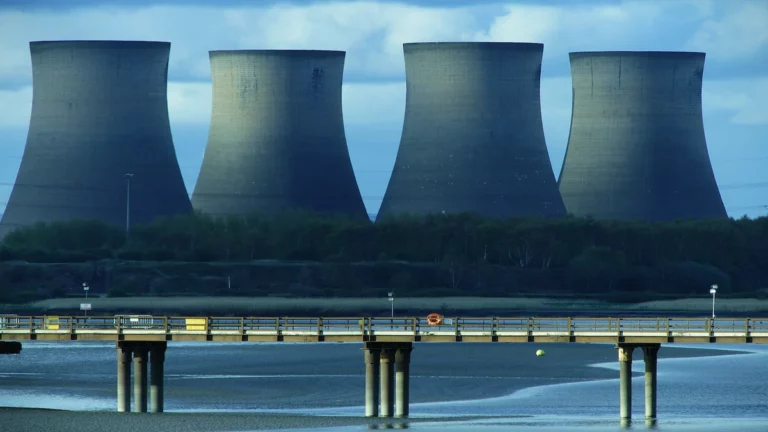Climate change technology and sustainability have long been contentious issues, but more needs to be accomplished, and the stakes are growing higher every year. Will this change in 2023 due to fresh advances in climate technology?
Climate-focused technology experienced a sharp surge and an even sharper drop between 2006 and 2011 under Cleantech 1.0. Due to overly optimistic assumptions about consumer behavior, unstable technology, and supply chain problems, VC funders reduced the size of the $25 billion they had invested in cleantech 1.0 by 2015.
We are on the right track with Climate tech 2.0. Sustainable technology is becoming more affordable, even as public authorities and governments pass legislation to permit a net zero future. These breakthroughs have a significant impact on the viability and future of this emerging field of tech climate change.
It continues to be challenging to live and develop a sustainable society. We are exposed to environmental threats daily, including resource depletion, pollution, deforestation, electronic trash production, poor air and water quality, resource depletion, and more.
By 2050, it is anticipated that CO2 emissions from just the United States will total 4,807 million metric tons if the proper steps aren’t implemented. At that moment, everyone should be worried, especially company owners and key players in the industry.
We need a solution, and we need it now. Using climate technology and sustainability is one-way organizations, and people have started to combat climate change.
What is Sustainable Technology?
Sustainable technology is an innovation that respects the national environment and fosters social and economic development. These innovations seek to offer recycled products while significantly lowering environmental and ecosystem risks.
There are several methods to describe sustainability in technology:
- Replacement
The method encourages a switch in the production of the product from non-biodegradable to sustainable ingredients. Natural energy also takes the place of non-renewable ones.
- Protection
Sustainable technology avoids depreciation, pollution, and other detrimental ecological consequences throughout its use or manufacturing.
- Performance
There is no doubt that technology is effective regarding energy and resource use. Environmentally sustainable technology can revolutionize how businesses and government institutions operate. Sustainable technology seeks to reduce any unfavorable social and environmental effects, which is advantageous for a company’s reputation and financial performance.
Each entrepreneur hopes to improve the world while respecting moral and ethical principles. By implementing sustainable concepts, organizations remain relevant while helping the environment.
Innovators and the general public are already embracing sustainable technology. Common technology and sustainability innovations include the following:
- Electric and public transportation
- LED lighting innovation
- solar energy
Forecasts on the Climate Technology and Sustainability
We had a conversation with top climate tech companies before the New Year. What do they think will happen in the upcoming year?
- Climate technology will appear as a ray of hope in a typically dark world
Tech for climate change stocks will appear as a reasonably consistent secure base for businesspeople, IT refugees, and investors as tech and cryptocurrency come back during the current economic slump. The latest Inflation Control Act and the unavoidable repercussions of climate change will establish precedents that will persist for a long time in the field of climate technology.
- The program will now be called Future Compatible
More businesses and funders will understand that “climate tech” is more than just “carbon tech.” It also entails taking future-friendly actions like employing electric vehicles, streamlining resource procedures, and opening distribution networks.
- Uses of electric and hybrid automobiles will extend
Electrification of boats, planes, and trucks will begin or at least go hybrid. The range may now be used for more than just passenger cars thanks to improved batteries, more effective electric motors, and electronic fuel injection.
- Our bodies will respond to food emissions through fungi and soil
Because the food system is responsible for one-third of all emissions, it must be addressed if we are to address the world’s greatest climate problem. We think the solution is just under our feet. First, we are only beginning to touch the surface of this option to upgrade invention, which has the potential to transform waste into food by accelerating fermentation-based methods using fungi to produce new, healthy, protein-rich foods. We must support regionally based regeneration solutions as a crucial instrument for carbon sequestration, which calls for climate-first agtech, supply chain technology, and fintech solutions.
- Energy assets that are distributed, connected, and produce electricity across utility markets
Power sources, including solar, batteries, electric vehicles, and variable architectural loads like warming, lighting, and cooling system, are growing without becoming widely used, much like mobile in the 2000s. On the back of basic arithmetic, the Inflation Reduction Act, and growing investor interest, we will witness enormous speeding up across the sector in 2023 with significant consequences to the total utility power composition.
- Climate investors take divestiture seriously
In 2023, investors will start to take disintegration seriously. More investors will realize that fission is undercapitalized and well-linked to the grid as well-funded fusion power projects move forward, which may be our greatest chance to decarbonize the situation.
- Carbon credit scams are coming in 2023
There is a conflict of interest because several businesses have collected money to manufacture, verify, and sell carbon credits. At least each success instance will fail, fold, or negligence will result in a disaster in 2023. Invisible practices. This will damage the sector in terms of money and purchasing.
- Transparency and trust are essential for the upcoming climate technologies
The stakeholders involved, stock mechanisms, motivations, and economy have significantly changed due to recent investment and talent flows in various climate-related businesses. The future electrical system will be bi-directional, necessitating additional exchanges. We observe a change in the carbon market away from low-quality credits, dependence on intermediary transactions, and sluggish validation. Instead, carbon removal programs, sales procedures, measuring techniques, and verification tools are being developed more creatively.
Securing trust and enhancing accessibility for new players are crucial as these two marketplaces and others keep growing. Examples of how they are put into practice include platforms that enable individuals to trade and sell in wholesale power markets or simple carbon monitoring and verification that enables producers to engage in carbon trading.
- Climate adaptation and mitigation solutions will be essential
They are funding businesses that incorporate climate adaptability into prevention measures. A lot of new businesses deal with these issues related to water, agriculture and fisheries, and cooling and heating and conduct both mitigation and adaptation efforts simultaneously.
We contend that it is now abundantly evident that the 1.5°C climate target will not be met. While it is essential to minimize a rise in temperature and decrease climate change’s impact, we must be ready to adapt to the worst effects of increased greenhouse gas levels.
- Focus will be on protecting the most vulnerable from climate change
The effects of climate change are expected to worsen and become more intense in 2023, so investors, philanthropists, and the government will pay more attention to buying more time for communities and ecosystems. Hurricanes Ian and Fiona this year, as well as devastating heat waves and floods wreaking havoc from Pakistan to the UK, have disproportionately affected those already most vulnerable.
A push toward defining the environment of sustainable capital markets in adaptation and recovery, as well as toward identifying the approaches and business structures that will give us the greatest chance of safeguarding lives, livelihoods, and the environment, will take place in the upcoming year. We work side by side to reduce emissions and quickly remove carbon dioxide from the atmosphere.
- Climate tech talent will migrate in 2023
They will expect to see business owners from well-known IT firms with enormous plans for integrating climate technology bring their expertise, networks, and zeal to a market primed for decarbonization. These are experts in constructing on a global scale who are converting trillion-dollar existing systems and sectors to create billion-dollar commercial prospects.
- Climate startups will become more agile and software focused
The requirement for climate solutions is increasing. More entrepreneurs are establishing climate businesses. Some of them are high-tech, deep-sea firms. A new generation of agile, climate-focused businesses will emerge.
Conclusion
Analysts think 2023 will be the year of additional advancement regarding climate technology and sustainability. Our earth cannot wait anymore. Thus this must occur.

















